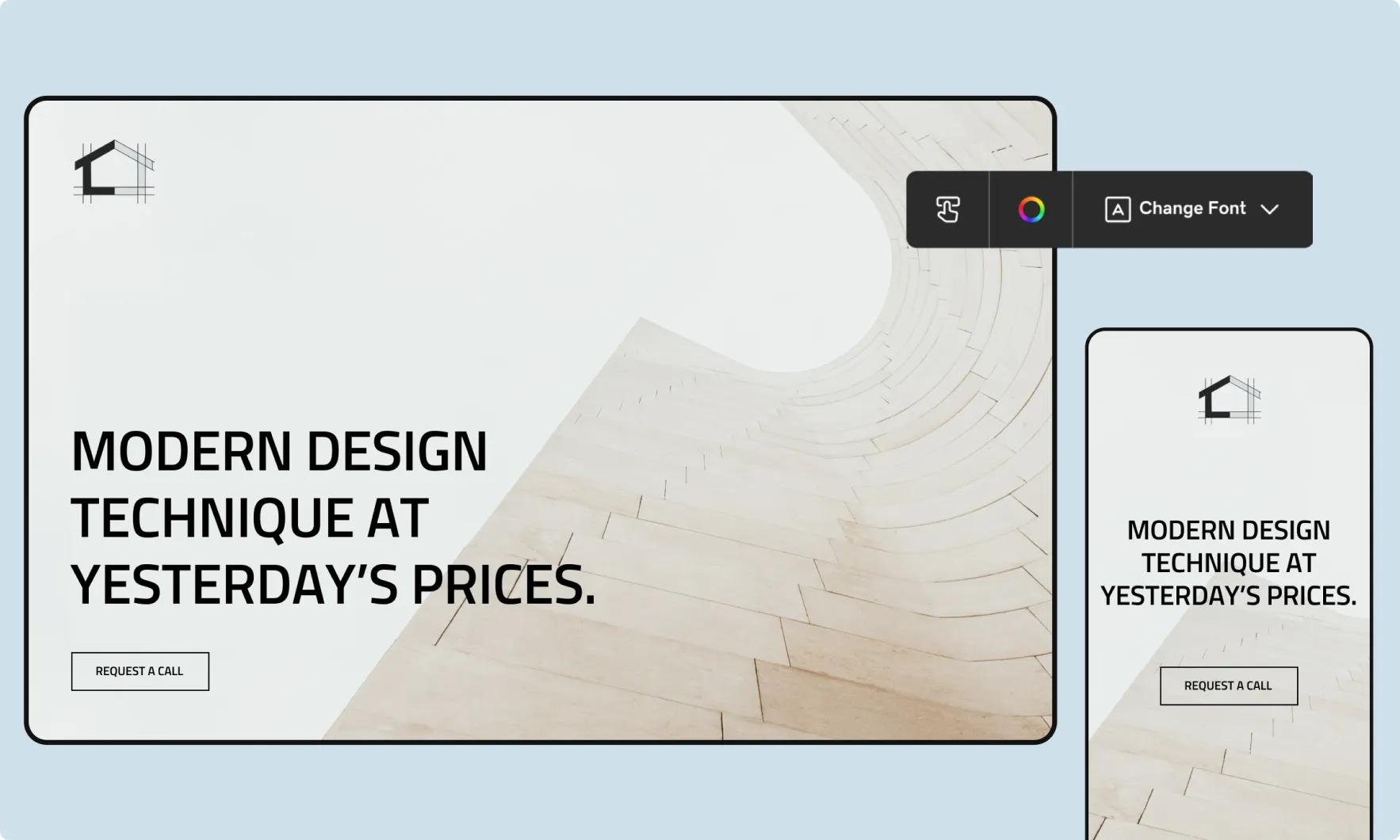Enhancing Your Online Existence: The Power of Responsive Web Site Layout
In the electronic landscape, where online visibility can make or break an organization, the value of receptive web site design can not be overemphasized. From making certain seamless mobile optimization to improving user experience and also improving your search engine rankings, receptive style has become a non-negotiable variable for any significant online endeavor.
Significance of Responsive Layout
Making certain a web site's responsiveness is vital in today's digital landscape for optimum customer experience across numerous gadgets. A receptive layout allows a website to adjust perfectly to various screen dimensions, guaranteeing that customers have a constant and easy to use experience whether they are accessing the website from a desktop, smartphone, laptop, or tablet computer. This flexibility is essential in dealing with the varied methods in which target markets involve with online content.
Additionally, responsive style favorably impacts a site's seo (SEARCH ENGINE OPTIMIZATION) initiatives. Search engines like Google prioritize mobile-friendly websites in their rankings, making responsive layout a key consider boosting visibility and driving natural traffic to the site. By providing a seamless customer experience across tools, responsive sites are more probable to bring in and preserve site visitors, eventually resulting in greater conversion rates and much better overall performance.
Mobile Optimization Methods

Another crucial element of mobile optimization is fast packing times. Mobile individuals expect quick access to information, and a slow-loading site can bring about high bounce rates. Optimizing images, minimizing HTTP demands, and leveraging browser caching are some techniques to improve loading rates on smart phones.
In addition, developing for touchscreens is vital in mobile optimization. Making certain that links and buttons are easily clickable which kinds are simple to complete can greatly boost the user experience on mobile devices.
Influence On User Experience
Designing a receptive internet site significantly affects the individual experience across various tools and display sizes. By executing receptive style techniques, such as liquid grids and adaptable pictures, sites can adapt seamlessly to various screen resolutions, ensuring optimal watching experiences for individuals. This adaptability boosts individual fulfillment and interaction, as site visitors can easily engage and browse with the site without experiencing display screen concerns or distortion.
Moreover, receptive web sites offer boosted loading times, which are crucial for maintaining individual interest and lowering bounce rates. A rapid and responsive site adds to a positive individual experience by offering quick accessibility to material and check this attributes, regardless of the tool being used. This streamlined experience urges users to explore the site more and enhances the likelihood of conversion or interaction with the wanted call-to-action.
SEO Advantages of Responsiveness
With the enhancing focus on mobile-friendliness in internet search engine algorithms, having a responsive site design can considerably improve your search engine optimization efficiency. Because they provide a better user experience for mobile users, search engines like Google focus on mobile-friendly websites in their rankings. Receptive style guarantees that your site adapts flawlessly to different screen sizes and devices, which can lead to reduced bounce prices and greater involvement metrics, both of which are important for SEO.
Additionally, responsive websites have a solitary link and HTML code throughout all gadgets, making it easier for search engines to crawl, index, and organize web content. This unified strategy assists internet search engine algorithms understand the internet site's web content and context better, potentially improving your positions in search engine result. Furthermore, responsive look at this now design removes the demand for different mobile web sites, minimizing the possibilities of duplicate content concerns that can harm your SEO initiatives.
Conversion Rate Optimization
Exactly how can we enhance web site efficiency through tactical optimization of conversion prices? Conversion Rate Optimization (CRO) is a vital aspect of maximizing the efficiency of an internet site. By concentrating on CRO, companies can boost the percentage of internet site visitors that take desired actions, such as buying, signing up for a newsletter, or asking for more info.
To enhance conversion rates, organizations have to analyze user actions, determine areas of rubbing in the conversion process, and apply services to enhance the user journey (Website Designers). This might entail A/B testing various variations of landing web pages, call-to-action buttons, or checkout processes to establish which elements yield the greatest conversion prices
Additionally, individualized web content and targeted messaging can boost user engagement and motivate conversions. By understanding the needs and preferences of their target market, organizations can customize their website content to resonate with visitors and drive them in the direction of conversion.

Verdict
In conclusion, responsive site style plays a critical navigate to these guys duty in improving online visibility by making sure ideal individual experience throughout different gadgets. Its impact on user experience and search engine rankings can not be overstated.
A receptive layout permits an internet site to adjust flawlessly to various display dimensions, making certain that customers have a constant and easy to use experience whether they are accessing the site from a desktop computer, smart device, tablet, or laptop. By providing a seamless user experience throughout devices, receptive web sites are a lot more likely to attract and keep site visitors, inevitably leading to greater conversion rates and much better overall efficiency.
By executing responsive style techniques, such as liquid grids and adaptable pictures, web sites can adapt perfectly to different display resolutions, ensuring optimum checking out experiences for individuals. Search engines like Google focus on mobile-friendly websites in their rankings because they provide a much better individual experience for mobile customers - Website Designers.In final thought, receptive internet site design plays an important role in enhancing online existence by making certain optimal individual experience across various gadgets